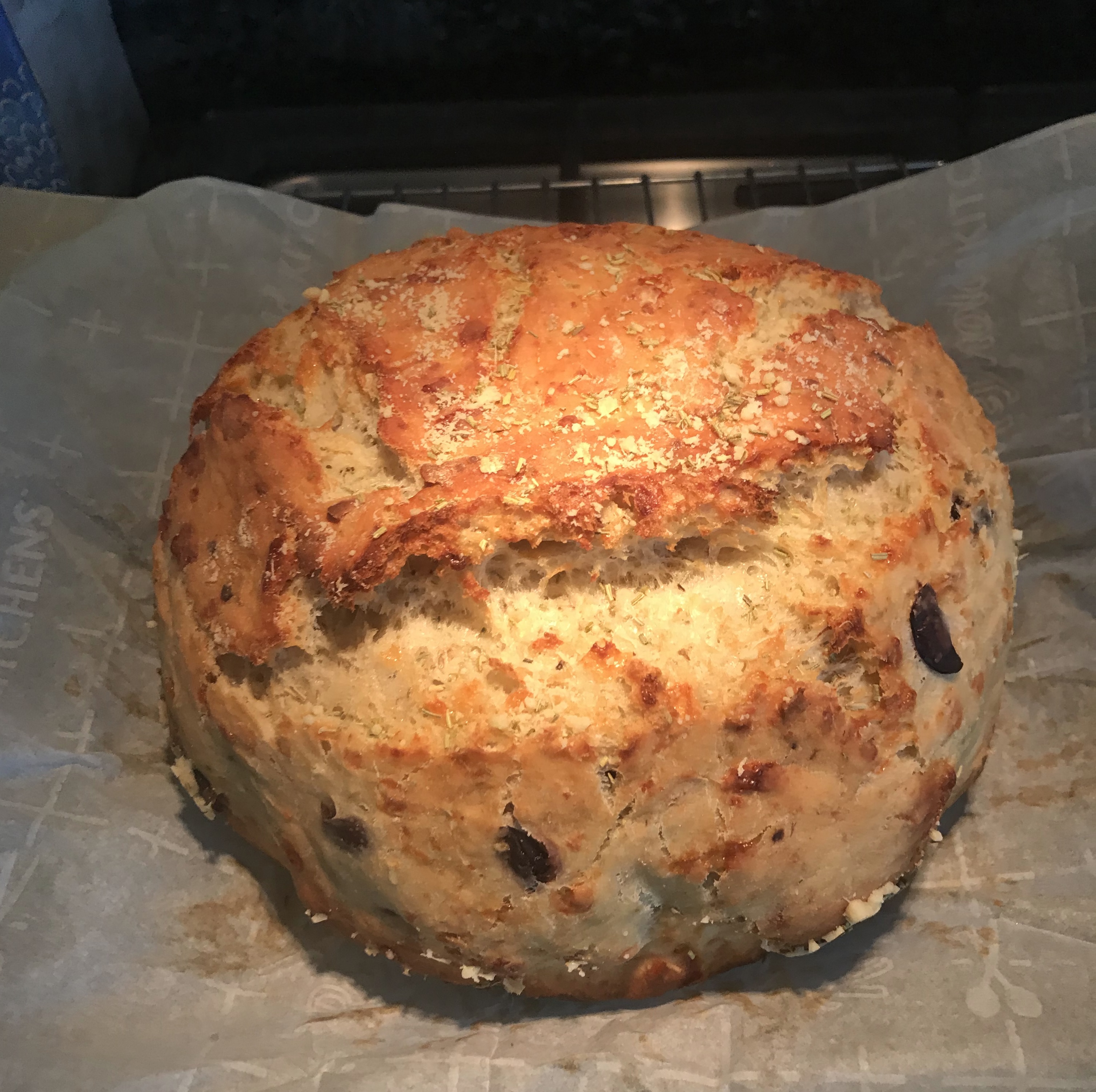




My first memory of making bread was during home economics class in junior high. Yes, I’m that ancient. We made pumpkin bread, a quick bread that requires no yeast, no kneading and no rising time.
Back in those early days, I was a timid eater. Kind of like the kids now who only eat white or yellow food. When we poured the canned pumpkin into the batter I thought, I’ll never eat that. I brought my loaf home and told my siblings “Try it, it tastes great.” They believed me, had a slice, and loved it. Quite shocked, I ate some and agreed. I’ve been making that same recipe every Thanksgiving for decades.
But through all the years, I’ve never made bread with yeast.* Now, in the midst of a pandemic, everyone is making yeast breads and I decided to join the party. My friend, JS, supplied me with an easy recipe that cooks in a Dutch oven.
As the gooey sticky mess of flour, water, salt, and yeast came together, I had major doubts. How could this possibly rise and turn into something edible? Well, it did and it was delicious. But still curious, I looked for a simple explanation of how those four ingredients could transform from glue into bread.

Flour is rich in gluten which makes bread light.
Water wets the flour, the starch swells, and gluten becomes soft.
Salt gives bread its flavor.
Yeast is a microscopic unicellular fungus that makes the dough rise.
If you’d like to try the Rosemary Parmesan Bread recipe that I now love, it is from the morethanmeatandpotatoes website. I’ve also added Kalamata olives and sun dried tomatoes to it. There is only one kneading session and one rising session.
https://morethanmeatandpotatoes.com/rosemary-parmesan-bread-recipe/
*Okay, no one told me there are different kinds of yeast. Of course, I had the wrong kind for my first recipe, had a mini-panic attack, and then figured out how to “activate” the yeast I bought.